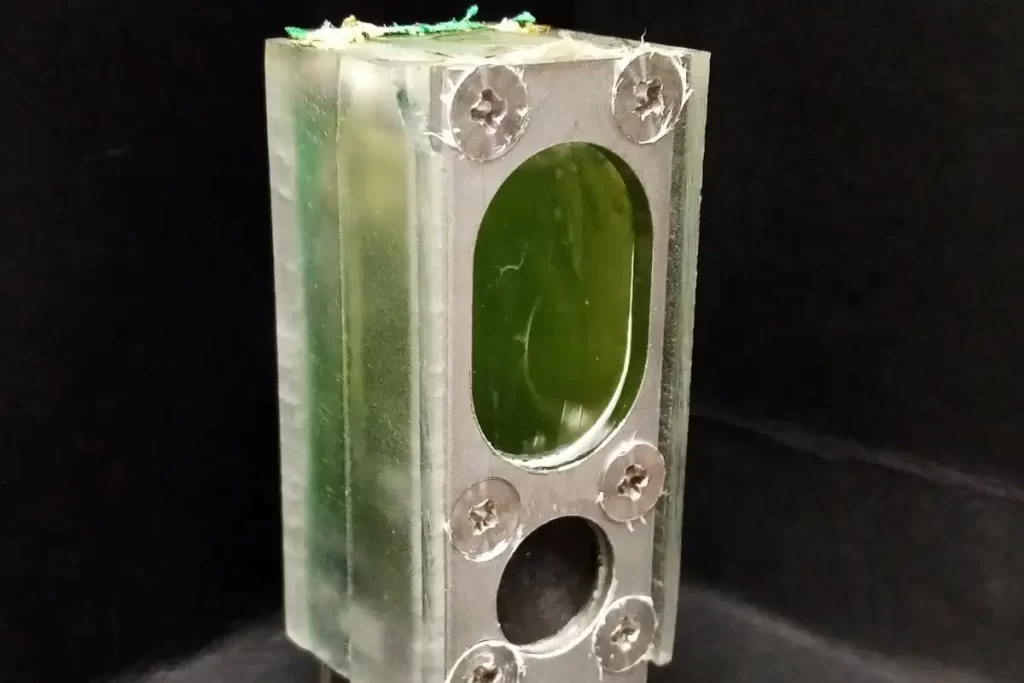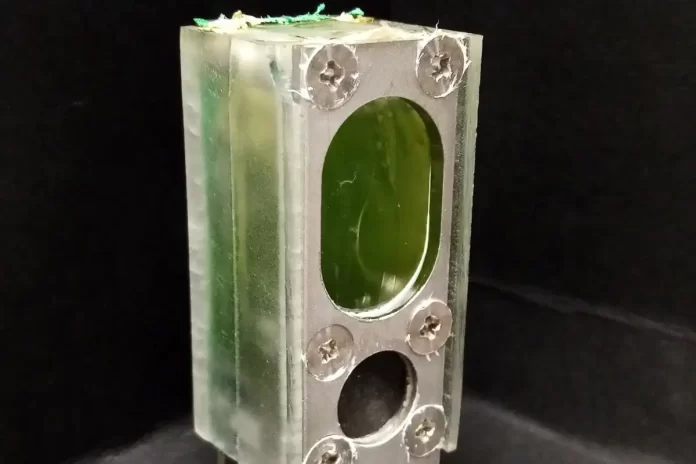“Bio-Powered Computing: Harnessing Cyanobacteria for Sustainable Smart Textiles and Beyond”
A Window into the Future: Blue-Green Algae Powers Computing
Imagine a computer chugging along for six months without ever being plugged into a wall. Envision this marvel running on nothing but the alchemic bounty of sunlight and a dash of chlorophyll. This is no science fiction; it actually happened, powered by none other than the simple blue-green algae, a form of cyanobacteria. Curious? Let’s dive into this fascinating world where biology meets technology, and discover what this amazing advancement could mean for the future of smart textiles and beyond.

The Magic of Cyanobacteria
At the heart of this revolutionary technology is a small, unassuming container that housed the blue-green algae—Synechocystis sp. PCC 6803, to be exact. This container, roughly the size of an AA battery and made from aluminum and clear plastic, sat on a windowsill, basking in the sunlight. During the six months stretch from February to August 2021, it powered an Arm microprocessor continually, even during the night. This tiny computing powerhouse simulated computational workloads by performing sums of consecutive integers in cycles and storing valuable data in the cloud for analysis. All powered by photosynthesis.
Photosynthesis: Nature’s Power Generator
So how does this work? Photosynthesis is a biological process where plants, algae, and some bacteria convert sunlight into chemical energy. In this experiment, the cyanobacteria essentially acted as a bio-solar panel. When hit by sunlight, they produced oxygen and presumably electrons. These electrons generated a small electrical current that powered the microprocessor. Remarkably, even in periods of darkness, the tiny algae continued to produce power, likely by metabolizing the surplus food they had synthesized during the day.
The Enigma of Electron Production
While the cyanobacteria’s photosynthesis process is well understood, the exact mechanism of how these electrons are generated remains somewhat elusive. There are two prevailing theories. One posits that the cyanobacteria themselves produce the electrons directly. The other suggests that these microorganisms create conditions that cause the aluminum anode to corrode in a manner that releases electrons. Given that the anode didn’t show significant degradation during the experiment, researchers lean towards the former explanation.
Potential for Expansion
Scaling this technology to power larger devices or even homes is still a distant dream, but not an impossible one. The current iteration of the algae-powered device is akin to the initial slow, cumbersome computers of the 20th century. Nevertheless, the technology holds promise, especially for remote or rural areas in low-to-middle-income countries. Smaller applications like environmental sensors or even mobile phone chargers could be among the first beneficiaries. Researchers have also been working on creating similar enclosures using more sustainable materials such as empty plastic bottles, pushing the cost-effectiveness of this technology further down.
Smart Textiles: An Electrifying Possibility
Now, imagine merging this biotechnological wonder with the burgeoning field of smart textiles. Smart textiles, also known as e-textiles, are fabrics embedded with digital components and electronics. They have a myriad of applications, from health monitoring to fitness tracking and even enhancing fashion. Most current smart textiles rely on conventional batteries, which come with limitations such as bulkiness, finite power supply, and the use of rare and environmentally damaging materials.
Bio-Integrated Textiles
Integrating algae-powered generators into textiles could be groundbreaking. Picture this: a workout shirt that not only monitors your vital signs but is also self-powered. As you go for your morning run under the sunlight, the embedded algae could harness solar energy to power the sensors in your shirt. When the sun goes down, the surplus energy stored could continue to power the device. This would vastly increase the lifespan of the textile’s electronic components and reduce reliance on synthetic batteries.
The Road Ahead
While this revolutionary intersection of biology and technology is immensely promising, it is important to note that more research and development are crucial. We need to understand the longevity of algae-powered devices, their power output in varying environmental conditions, and the efficiency of scaling them up. There’s also the question of how these devices perform under everyday wear and tear if integrated into textiles.
Collaborative Efforts
The potential for commercial application within five years is an optimistic yet achievable goal. Universities and research institutions, along with commercial enterprises, will need to collaborate closely to overcome the obstacles. The early success of this algae-powered computer testifies that nature has solutions waiting to be discovered, offering a sustainable and efficient way to power future technologies.
Conclusion
The algae-powered computer running uninterrupted for six months is a milestone reminiscent of early computing breakthroughs. It underscores the untapped potential lying in the simplest of life forms—cyanobacteria. As we venture into a future increasingly dominated by tech, merging our digital aspirations with sustainable, biological power sources could become the exemplar of innovation.
Just like ancient weavers who masterfully interlaced threads to craft resilient fabrics, the scientists of today are intertwining principles of biology with digital advancements. The tapestry they are creating could radically change how we power the world. Whether it’s a computer on a windowsill or a smart textile on your back, the future looks brighter—and greener—than ever.
Keywords: Cyanobacteria, Photosynthesis, Smart Textiles (Post number: 53), Sustainable Power, Electron Production





